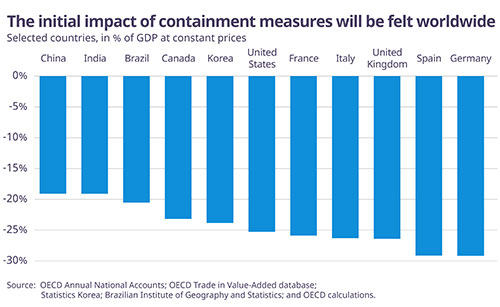
Figure 1

Figure 2
Grim forecasts of the economic consequences of COVID-19 have now become the norm. In its April World Economic Outlook, the IMF predicts a contraction of world GDP growth that is much larger than the global financial crisis of 2008-2009. Not surprisingly, this has been described as the worst global downturn since the Great Depression. This is the consequence of what the IMF calls the ‘Great Lockdown’, as economic and social activities are sharply curtailed across the world to contain and mitigate the coronavirus pandemic.
The Asian region, which includes some of the most dynamic economies in the world and accounts for more than 60% of the global population, is facing zero growth for the first time in 60 years. The region has endured the oil crisis and stock market crash in the early 1970s, the Asian financial crisis of 1997-98 as well as the global financial crisis of 2008-2009 without suffering a region-wide recession, although a number of countries experienced negative growth. But this time is very likely to be different. Regional growth is predicted to plummet to zero, although other forecasts, such as by the ADB, are less dire. Both the IMF and alternative forecasts concur that there will be a recovery in 2021. Nevertheless, in the short run, the poor and vulnerable in the Asian region are likely to bear the brunt of the sharp growth slow-down, while also bearing the brunt of a public health crisis.
Some of the affluent nations of the world have demonstrated that they are prepared to amass huge fiscal and financial resources, equivalent to more than 60% of US GDP, to ameliorate the rather adverse economic consequences of fighting the coronavirus pandemic. The poorer countries of the Asian region are unlikely to match such firepower. What Japan or even China can do, Cambodia cannot. Such countries will have to rely significantly on external assistance both through bilateral donors and multilateral agencies. Whether such assistance will be forthcoming on a timely and adequate basis remains to be seen.


